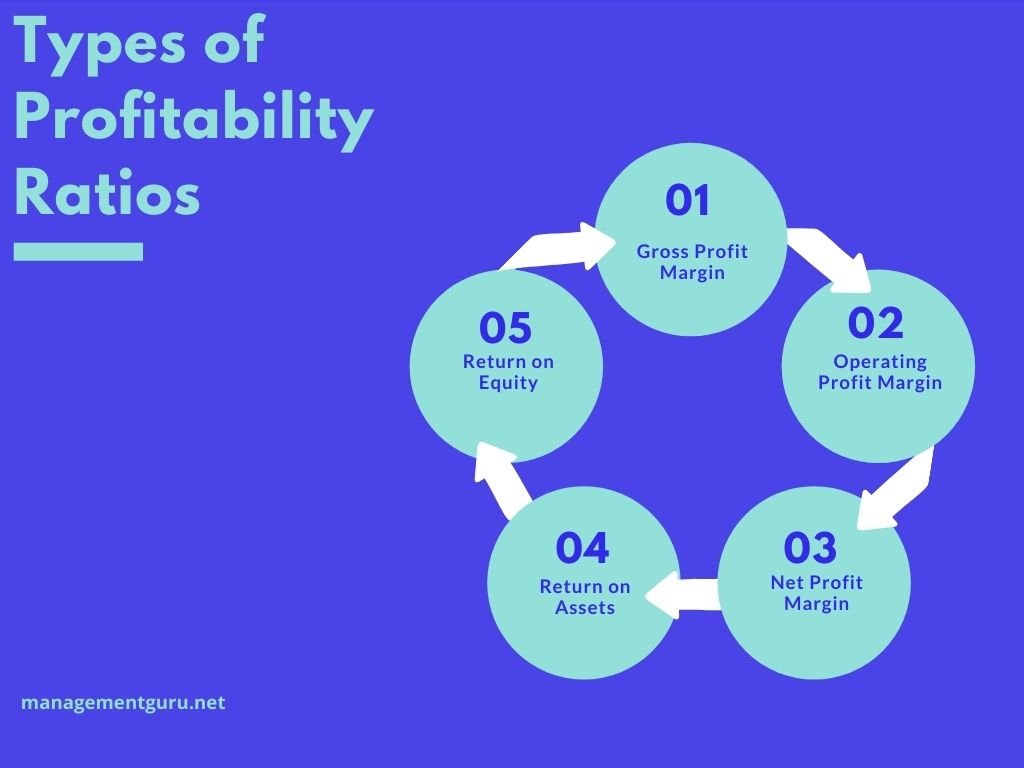Profitability ratios are metrics that assess a company’s ability to generate income relative to its revenue, operating costs, balance sheet assets, or shareholders’ equity.
Profitability ratios show how efficiently a company generates profit and value for shareholders.

It measures the relationship between gross profit and sales.
It is calculated by dividing gross profit by sales.
It measures the relationship between net profit and sales of a firm.
It indicates management’s efficiency in manufacturing, administrating, and selling the products. It is calculated by dividing net profit after tax by sales.
Net profit margin or ratio = Earning after tax X 100 / Net Sales
It establishes the relationship between total operating expenses and net sales.
It is calculated by dividing operating expenses by the net sales.
(0r)
Operating expenses includes cost of goods produced/sold, general and administrative expenses, selling and distributive expenses.
Return on assets is the ratio that is used to measure the company’s ability to generate profit by using its whole resource, the assets.
It shows the percentage of the net income or net profit comparing to the average total assets.
Return on assets shows how efficient the company is in using the assets to generate profits in a period of time.
The high return on assets usually shows that the company performs well in making a profit from the assets it has.
Return on assets can be calculated by comparing net income or net profit after interest and tax in the period to average total assets.
Return on Assets = Net Profit / Average Total Assets
Return on equity is the ratio that is used to measure the company’s ability to generate profit by using its investors’ money.
It shows the percentage of the net income or net profit comparing to the average total equity.
Return on equity shows how efficient the company is in using the investor’s money to generate profits in a period of time.
The high return on equity usually shows that the company performs well in making profits from its investors’ money.
Return on equity can be calculated by comparing net income or net profit after interest and tax in the period to average total equity.
Return on Equity = Net Profit / Average Total Equity